The sites, designers, and historical moments included in this online guide were chosen, in part, because they represent a variety of themes that are important to communicating the breadth of cultural landscapes associated with the National Park Service (NPS). Interrelated and multifaceted, those themes are briefly discussed below. Because the themes are complex, these essays should not be considered comprehensive. Rather, they are overviews—intentionally loose and broad—intended to introduce major concepts, provide basic background, and inspire further research.
During the late nineteenth century, as appreciation of nature, history, and scenery as the subjects of literature and art grew in popularity, interest in natural phenomena resulting in conservation practices also emerged—especially in reaction to exploitation of such places as Niagara Falls (NY) and Hetch Hetchy (CA). In urban areas, the design of nineteenth-century parks in the Picturesque style was often meant to evoke the natural landscape. Close to metropolitan centers in the mid-Atlantic, natural areas such as the Palisades (NJ), the White Mountains (NH), Mount Desert (ME), and the Schuylkill River (PA) provided respite for city dwellers. By the turn of the century, the preservation of scenic places for recreation and tourism—combined with patriotic ideals touted by the railroads through the “See America First” campaign—were shaping perceptions of the American landscape. Thus the protection of nature and scenery was at the heart of the passage of the Organic Act in 1916, which created the NPS. Three years later, Congress designated Lafayette National Park (later renamed Acadia) in Maine as the first national park east of the Mississippi River.
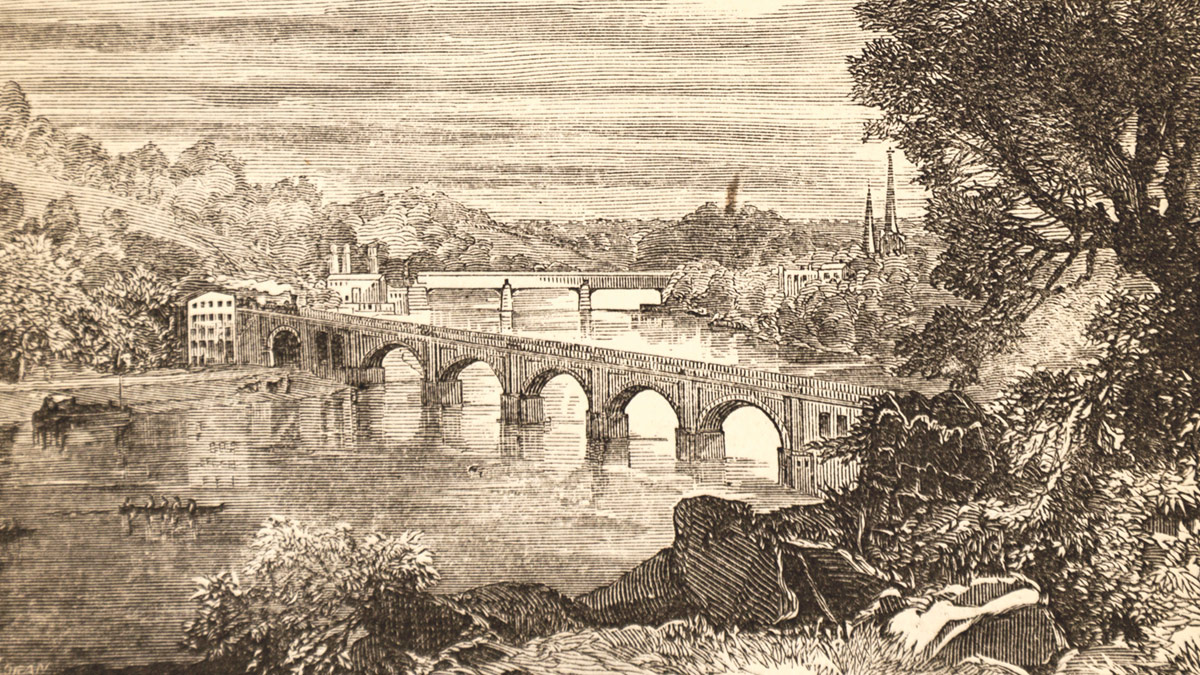 The Falls of Schuylkill, from Fairmount Park and the International Exhibition at Philadelphia (1875), by Charles S. Keyser
The Falls of Schuylkill, from Fairmount Park and the International Exhibition at Philadelphia (1875), by Charles S. Keyser
In the design of national and state parks, the conservation of natural scenery was apparent in the purposeful framing of significant views, with landscape compositions enhanced by the use of native plants and locally sourced material. Design considerations promoted cultural resource management, compatibility with natural systems, and a sense of harmony with the physical setting. By the mid-twentieth century, the importance of nature conservation in urban areas was reinforced by the necessity of protecting drinking water from pollution. In 1962, the National Natural Landmark initiative was established to recognize areas for their outstanding condition, exceptional scenery, rarity, diversity, and value to science and education.
Although the origin of the NPS lies in the conservation of scenic and natural resources, the study and interpretation of cultural associations and lifeways became institutionalized as part of the NPS mission in 1933. That year, the administration and interpretation of national parks, monuments, and cemeteries, and of selected Native American sites, was transferred to the NPS from the War Department and Forest Service. Also in 1933, the Historic American Buildings Survey (HABS) was created to document representative examples of architecture, including ethnographic and vernacular structures. A decade later, the George Washington Carver National Monument (MO) was established to preserve and interpret African American history. A number of properties affiliated with the civil rights movement were recognized by the NPS, including those associated with Booker T. Washington (VA), Frederick Douglass (Washington, D.C.), and Martin Luther King, Jr. (GA).
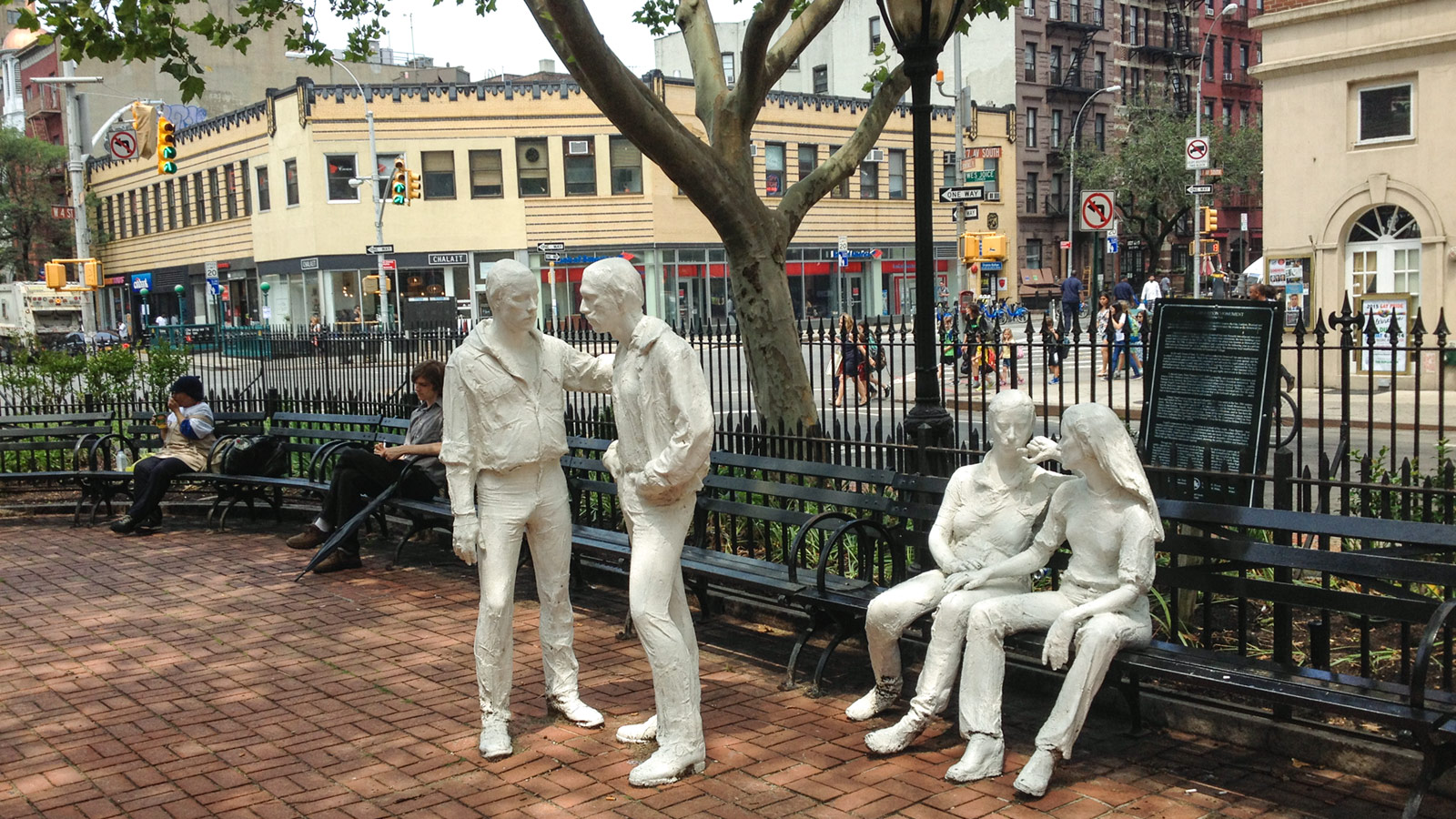 Christopher Park in New York City
Christopher Park in New York City
In 1966, the National Historic Preservation Act expanded the purview of the NPS to include diverse cultural resources of significance at the local, state, and national level. By the end of the next decade, numerous multiethnic sites were listed in the National Register of Historic Places and designated National Historic Landmarks. Among those are places such as Ybor City (FL), which was significant in Cuban American history; Manzanar (CA), which interprets a Japanese American internment camp; and a number of sites important in the history of women’s rights, including the Susan B. Anthony House (NY), the home of Edith Wharton (MA), and the birthplace of Juliette Gordon Low (GA). In 1990, the NPS codified guidelines for addressing diversity by expanding its focus beyond the preservation and interpretation of historic sites to include those places that reflect the stories of cultural groups through their continued interaction with the property, district, or landscape. Less than ten years later, acknowledging the significance of the gay rights movement, a district composed of Christopher Park, the Stonewall Inn, and the surrounding streets (NY) was listed in the National Register of Historic Places in 1999 and designated a National Historic Landmark in 2000. Today, the NPS supports a wide range of programs that illustrate cultural diversity in America, providing stewardship and interpretation of such resources as farming communities, Native American properties, religious and sacred places, and sites related to slavery, among many others.
Colonial-era towns were often located on waterways, which provided power for the milling of grain, the production of textiles, and the processing of timber. Rivers and canals were used for the transport of raw and manufactured goods; roads—and, later, railroads and highways—emerged to follow those waterways, linking the towns and cities in a network that grew to span the country. Illustrating that roadways could also be recreational resources, in the 1880s landscape architects developed pleasure drives as an integral part of such park and parkway systems as Boston’s Emerald Necklace, designed by Frederick Law Olmsted, Sr., and the 50-mile-long Grand Rounds developed by H.W.S. Cleveland in Minneapolis. Between 1890 and 1929, Monument Avenue in Richmond (VA) was developed by real estate investors. Punctuated with statues of significant Confederate leaders, the boulevard demonstrated that roads could also be commemorative landscapes.
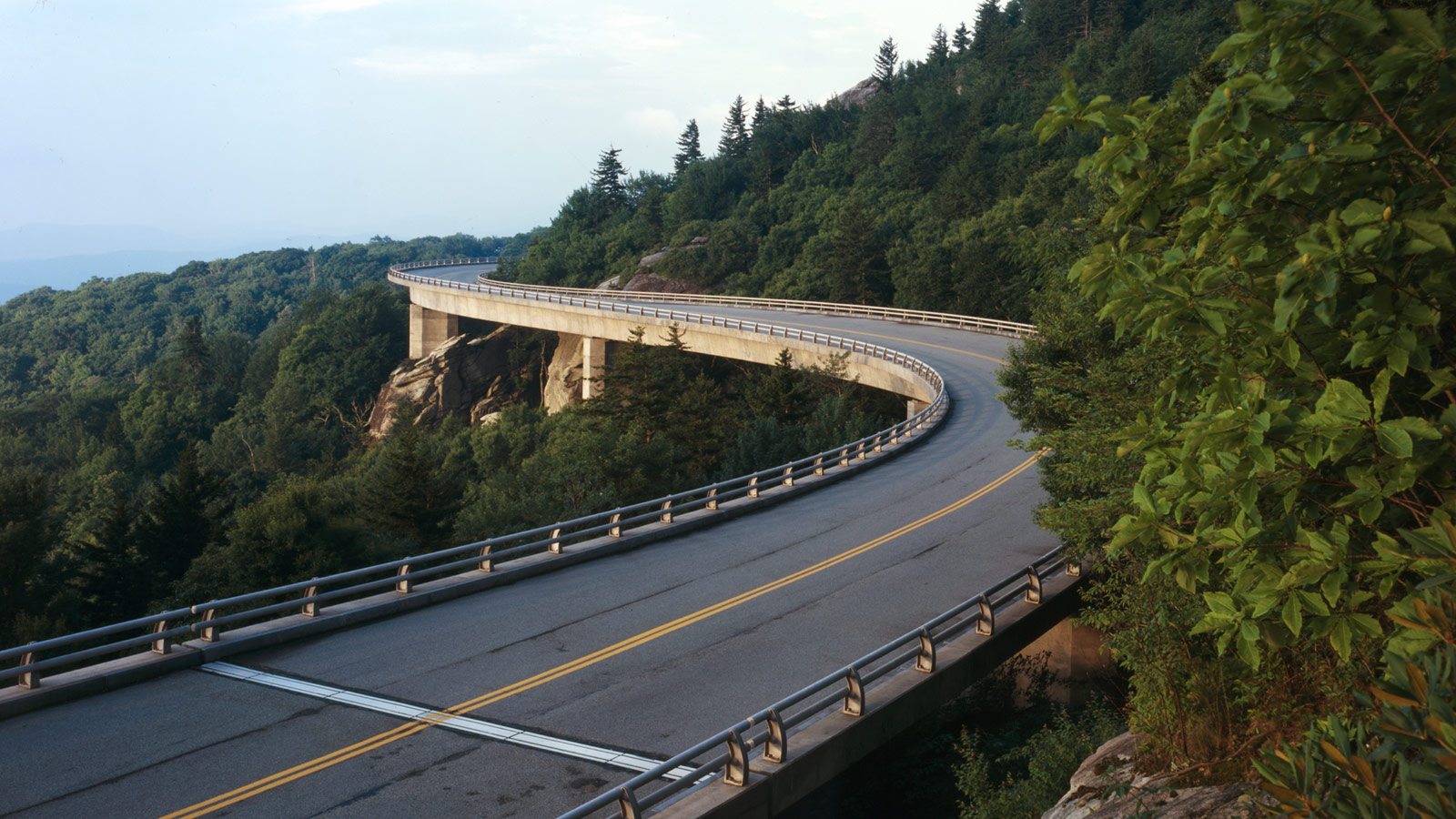 The Linn Cove Viaduct along the Blue Ridge Parkway
The Linn Cove Viaduct along the Blue Ridge Parkway
Dedicated in 1913, the first national memorial devoted to Abraham Lincoln was the Lincoln Highway, a 3,389-mile-long route that stretched between New York City and San Francisco. The earliest national parks grew out of tourism associated with the “See America First” campaign. Landscape architects, planners, and engineers were employed by the NPS to develop roads and trails that harmonized with the surrounding landscape. Construction of the Blue Ridge Parkway (VA and NC) commenced in 1936 and was mostly completed by 1936. Managed by the NPS, the 469-mile route conserves and interprets a diverse range of scenic, cultural, and industrial resources. In 1969, the Historic American Engineering Record (HAER) was created by the NPS to document nationally significant bridges, canals, roads, parkways, and industrial sites. Since 1984, the NPS has partnered with public and private organizations on the stewardship of National Heritage Areas, which encompass scenic, historic, and cultural resources that are emblematic of American history. An example of this is the Schuylkill River National and State Heritage Area (PA), which interprets the role of the river in the Industrial Revolution. Many roads and industrial sites have been acknowledged by the NPS for their significance in American history and heritage: In Philadelphia, a trail paralleling the Delaware River was used by eighteenth-century farmers transporting goods to market. The trail became a toll road in the early nineteenth century, a horse-drawn streetcar line in 1854, and is now the central feature of the Germantown Historic District, which was designated a National Historic Landmark in 1965. In Massachusetts, the Lowell National Historical Park (established in 1978) preserves and interprets industrial and transportation infrastructures associated with nineteenth-century textile mills.
Shaped by both natural and cultural processes, cities evolve through the efforts of designers, planners, and engineers. In the early history of the United States, a settlement’s location was selected because it was defensible and was in close proximity to natural resources, arable land, and a waterway that could be used for industry and transport. Colonial-era towns included public space for community gatherings, markets, and livestock grazing. The plan for Philadelphia laid out by William Penn and Thomas Holme in 1682 included public spaces dispersed throughout the city in the form of four neighborhood squares. In Georgia, James Oglethorpe’s plan for Savannah, developed in 1733, comprised a repeating pattern of neighborhoods organized around commons and connected by a unifying street grid.
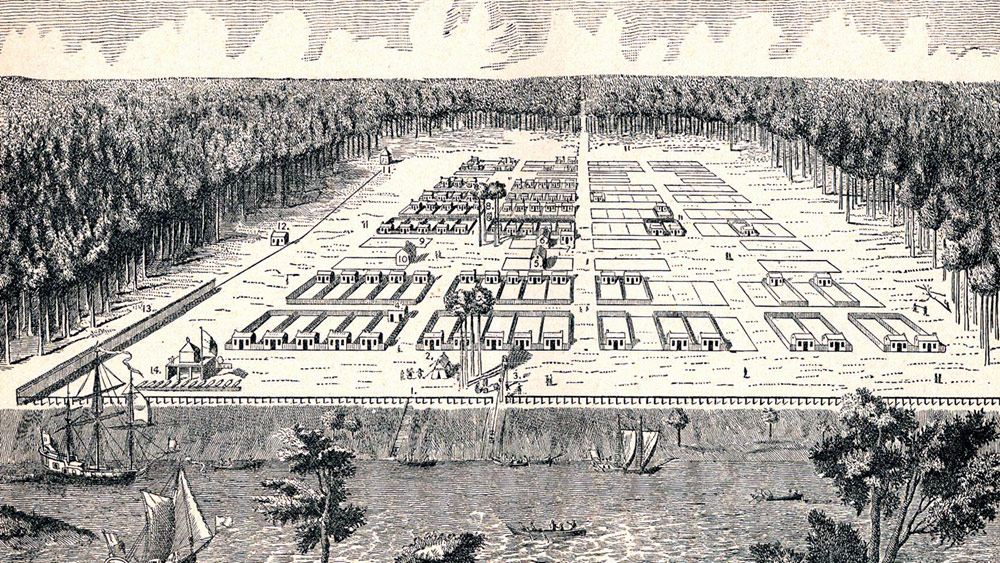 An illustration of James Oglethorpe’s plan for Savannah, Georgia
An illustration of James Oglethorpe’s plan for Savannah, Georgia
The industrial revolution led to the rise of the urban planning profession in America, but landscape architects also played an active role in the design of cities, towns, and suburbs. In reaction to the congested and chaotic conditions of urban areas at the turn of the century, the City Beautiful movement promoted monumental grandeur and formal order. As transportation networks became more sophisticated, landscape architects actively engaged in the design of suburbs. Two major types of spatial organization underpin the layout of streets and division of lots within suburbs: curvilinear, in which streets follow topography and lots are irregularly shaped in order to present idealized communities in naturalistic settings; and rectilinear, which follows a grid, creating a consistent pattern of road alignment and housing lots. The NPS is active in the stewardship and interpretation of a variety of sites that represent the breadth of urban development in America. For example, the company town near Chicago designed by landscape architect Nathan Franklin Barrett in 1880 for railroad entrepreneur George Pullman was designated a National Historic Landmark in 1970, becoming the Pullman National Monument in 2015.
Although the City Beautiful movement of the early twentieth century sought to create order and dignity in American cities (most successfully in Chicago and Washington, D.C.), urban renewal is most often associated with the decades following World War II. During the first part of the century, cities became centers of industry, necessitating the construction of housing for workers and the development of robust transportation infrastructures. As affluent people escaped the pollution and overcrowding of cities by moving to suburbs, historically relevant commercial areas, entertainment districts, and neighborhoods suffered economic decline. In 1949, the passage of the Housing Act provided federal funding that was used to raze slums and create public housing. For the next two decades, local authorities and business owners demolished dilapidated buildings and cleared deteriorated neighborhoods for the construction of convention centers, office buildings, hospitals, public housing, and highways. Tenements in New York City were demolished for the construction of Lincoln Center, the industrial waterfront in St. Louis was transformed into the Jefferson National Expansion Memorial, and barrier reefs in Miami were developed for the creation of Lincoln Road Mall.
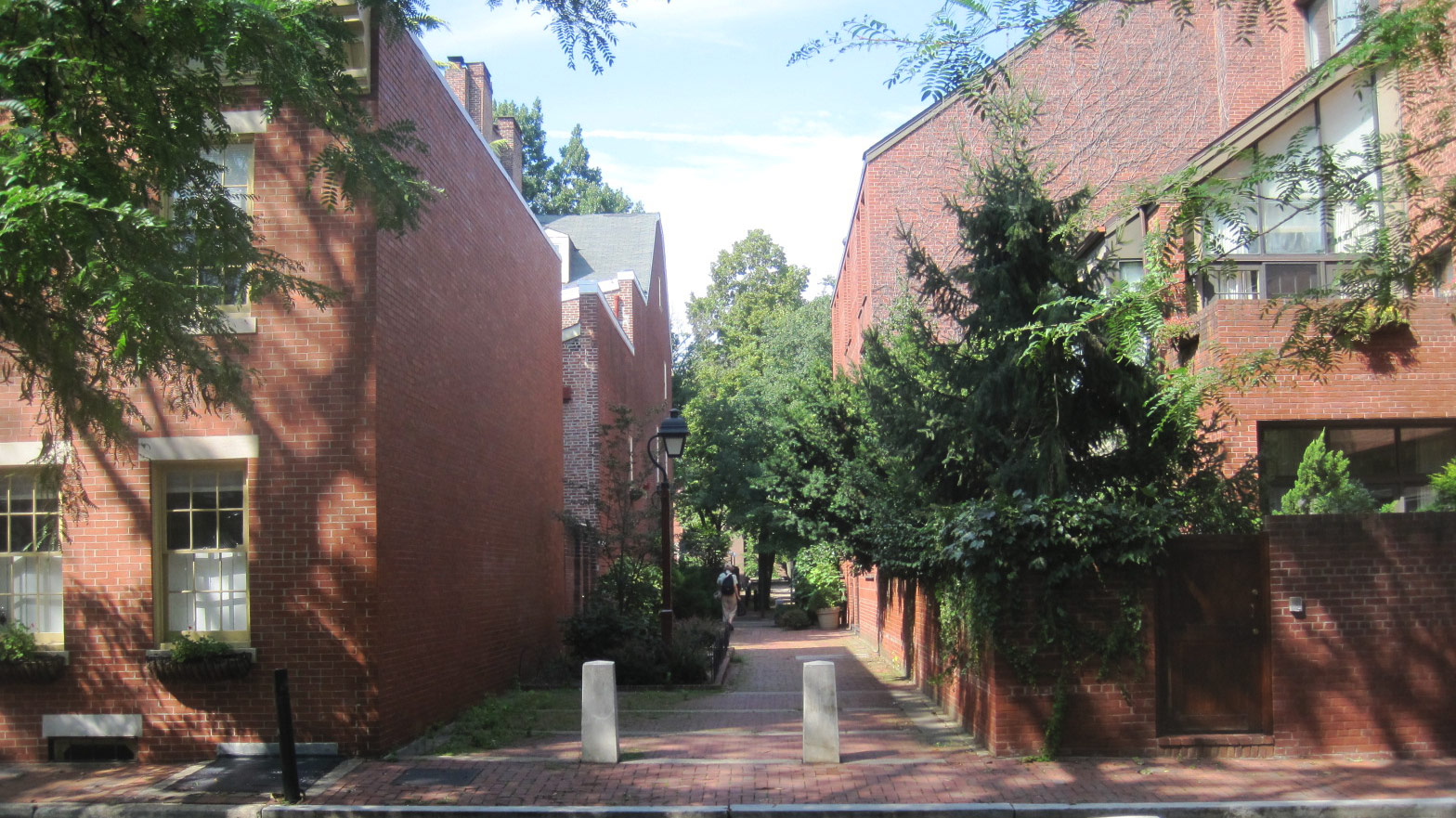 Society Hill neighborhood in Philadelphia
Society Hill neighborhood in Philadelphia
While urban renewal projects often had homogenizing results, Philadelphia’s Society Hill, developed by city planner Edmund Bacon and landscape architect John Collins in the 1950s, preserved and restored the historic fabric of a significant neighborhood while introducing contemporary architectural and landscape features. Other projects around the country were led by Sasaki, Walker & Associates, Daniel Kiley, Lawrence Halprin, John Simonds, and Wallace, McHarg, Roberts & Todd. In 1966, the passage of the National Historic Preservation Act made the NPS responsible for federal preservation initiatives and led to the creation of the National Register of Historic Places, which included designations for historic districts. That same year, guidelines were created that prohibited the use of federal funds in the construction of highways that would destroy historic properties. In 1970, the passage of the National Environmental Protection Act codified the importance of preserving historic and cultural aspects of national heritage.
Recreational spaces in urban areas are often shaped by shifting concepts of leisurely pursuits and perceptions of the role of natural systems in the city. By the 1820s, historic battlefields such as Ticonderoga (NY), Yorktown (VA), and Cowpens (SC) were attracting tourists. In the mid-nineteenth century, rural cemeteries on the outskirts of major metropolitan areas were some of the country’s earliest large-scale designed landscapes, attracting visitors and offering a range of passive activities (beyond just visiting the graves of loved ones) that included strolling, birding, and touring, with guidebooks produced for the interpretation of relevant botanical specimens and funerary art. Following the advent of rural cemeteries, municipal and state parks designed at the turn of the twentieth century were conceived to encourage healthful active and passive recreational activities for all classes. These parks, ranging from small greens and neighborhood parks to entire park systems and expansive scenic reservations, were envisioned as an antidote to the urban environment—a respite from the stress, noise, and pollution associated with city living, offering physical and spiritual contact with nature, scenery, and places steeped in history. Throughout the twentieth century, these public spaces were adapted to accommodate new modes of recreation and, by the middle of the century, they included visitor amenities such as swimming pools, picnic areas, recreational fields, and community centers.
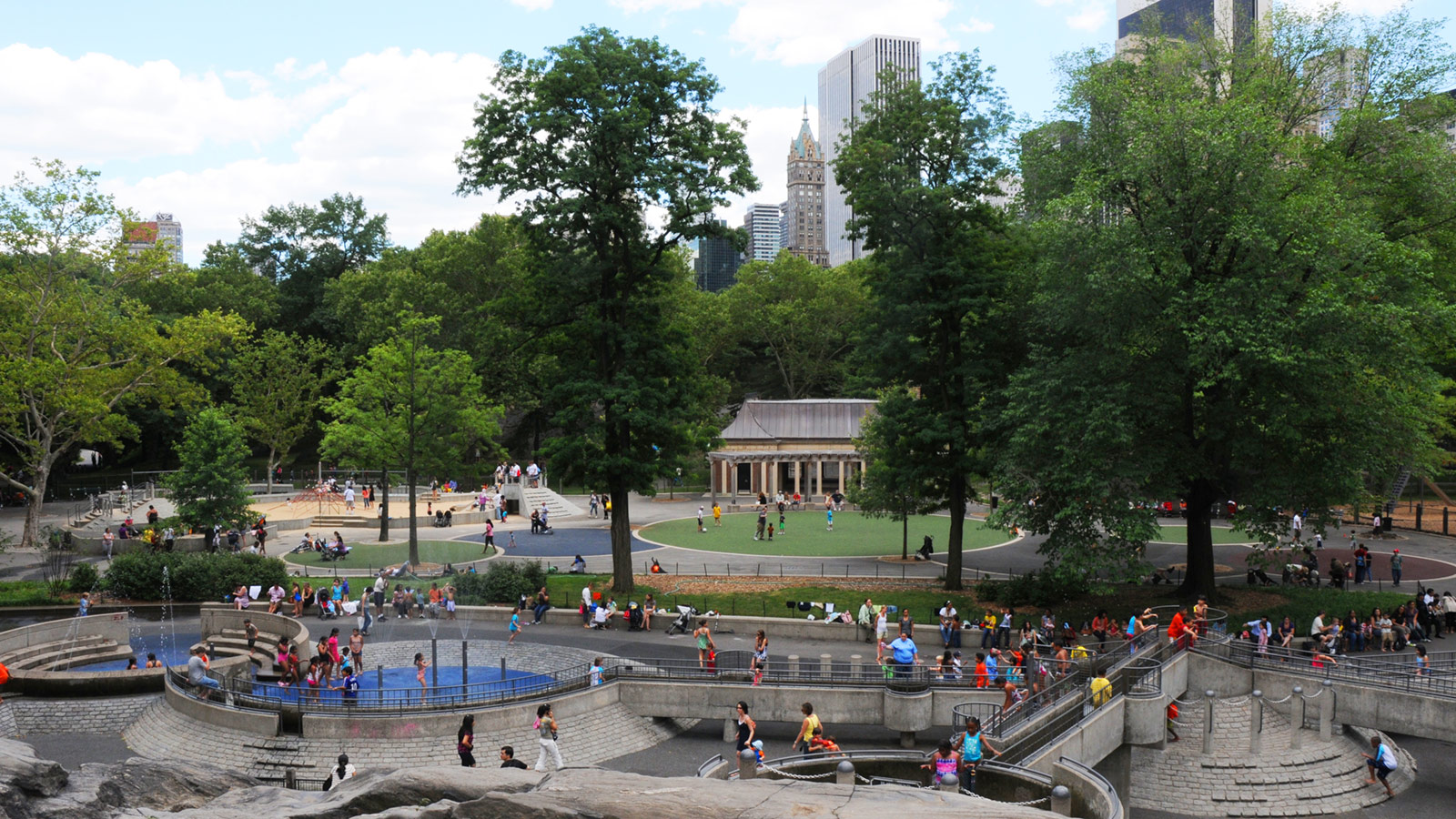 The Heckster Playground in Central Park, New York City
The Heckster Playground in Central Park, New York City
New York City’s Central Park, designed by Frederick Law Olmsted, Sr., and Calvert Vaux in 1857, was designated a National Historic Landmark in 1963, acknowledging the national significance of the park. In Philadelphia, Fairmount Park—designed in 1812 and listed in the National Register of Historic Places in 1972—is the largest municipal park in the nation. Neighborhood parks such as Norris Square, also in Philadelphia, have benefited from the Land and Water Conservation Fund, a program created in 1965 and managed by the NPS. Today, recreational resources preserved and interpreted by the NPS range from resort hotels and spas to zoos, exposition grounds, sports fields, and parks.